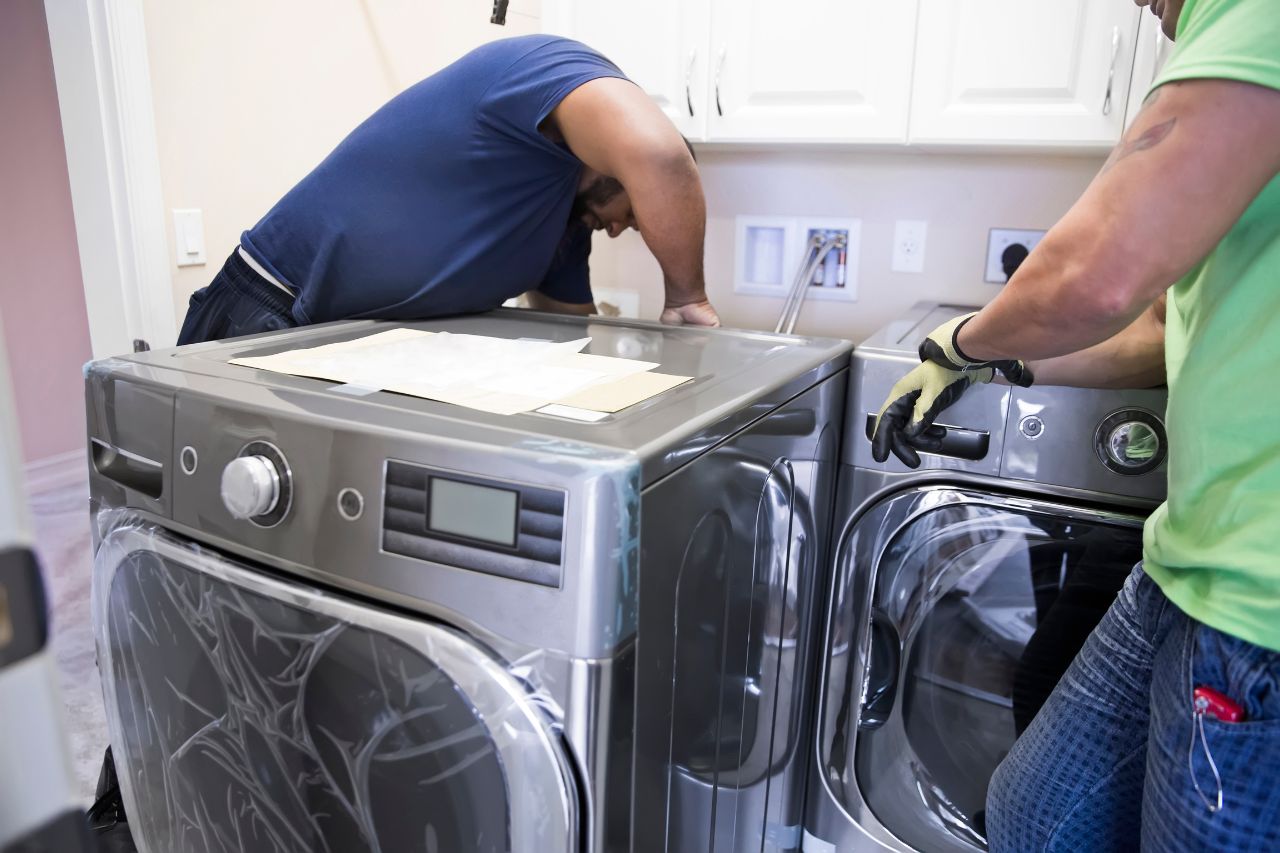Downsizing Before a Move: 12 Expert Decluttering Strategies That Save Time & Money

Introduction: Why Downsizing Before a Move Is Essential
Moving to a new home is exciting, but it can also be one of life’s most stressful events. One of the best ways to simplify the process is by downsizing before a move. Decluttering not only helps you save money on packing supplies and moving costs but also gives you the chance to start fresh in your new space without unnecessary baggage. Whether you’re relocating across town or across the country, adopting the right decluttering strategies will save you both time and money.
The Hidden Benefits of Decluttering Before Relocating
Saving on Moving Costs
Every item you pack, transport, and unpack adds to your moving bill. By eliminating things you no longer use, you can cut back on the number of boxes and even reduce the size of the moving truck required. Fewer items mean fewer hours movers need to spend handling your belongings.
Reducing Stress and Anxiety
Clutter can feel overwhelming, especially when faced with the task of boxing it all up. A cleaner, more organized space makes moving less stressful and helps you focus on what truly matters—settling into your new home.
Creating a Fresh Start in Your New Home
Moving offers a golden opportunity to let go of the past. Downsizing ensures you arrive at your new home with only the items that add value to your life. This fresh start sets the tone for a more organized and peaceful living environment.
12 Expert Decluttering Strategies That Save Time & Money
1. Start Early and Create a Decluttering Timeline
The earlier you start, the less rushed and stressful the process will be. Create a realistic timeline and tackle small sections each day. This prevents burnout and ensures you won’t be making rushed decisions at the last minute.
2. Tackle One Room at a Time for Better Focus
Instead of bouncing between areas, concentrate on one room at a time. This keeps the process manageable and gives you a sense of accomplishment as you finish each space.
3. Use the Four-Box Method: Keep, Donate, Sell, Trash
This simple yet effective method forces you to make quick decisions. Label four boxes and place every item in one of them. By the end of the day, you’ll have clear piles ready for action.
4. Digitize Old Documents and Photos
Paper piles and photo albums take up valuable space. Scan important documents and photos, then store them securely in the cloud. Not only will this save space, but it also protects your memories from physical damage.
5. Sell Unwanted Items Online or Host a Garage Sale
Turn clutter into cash by listing items on platforms like Facebook Marketplace, Craigslist, or eBay. If you prefer a traditional approach, a weekend garage sale can help you get rid of large amounts quickly.
6. Donate to Charities and Local Organizations
Items in good condition that don’t sell can be donated to charities, shelters, or thrift stores. This helps others in need while keeping usable goods out of landfills.
7. Apply the One-Year Rule for Clothing and Accessories
If you haven’t worn it in a year, chances are you won’t wear it again. Be ruthless with clothing, shoes, and accessories to avoid dragging unused items to your new closet.
8. Streamline Kitchen Essentials Before Packing
Kitchens are notorious for duplicates—three spatulas, five coffee mugs, or unused gadgets. Keep only what you truly use and donate or recycle the rest.
9. Dispose of Hazardous or Expired Items Safely
Cleaning supplies, expired medications, and old paint cans shouldn’t be packed. Check local regulations for safe disposal methods to avoid fines and environmental harm.
10. Maximize Storage Solutions for What You Keep
Use bins, organizers, and vacuum-sealed bags to maximize space. This ensures your essentials are neatly packed and easy to unpack when you arrive.
11. Label and Categorize Boxes During Decluttering
Label boxes clearly with room names and contents. This not only streamlines moving but also makes unpacking much more efficient.
12. Involve the Whole Family in Downsizing Decisions
Decluttering shouldn’t fall on one person’s shoulders. Get the entire household involved, especially kids, by letting them decide what to keep or donate from their own belongings.
Expert Tips for Avoiding Common Downsizing Mistakes
Don’t Wait Until the Last Minute
Procrastination is one of the biggest mistakes when downsizing. Waiting until a week before your move forces you into hasty decisions, and you’re more likely to pack unnecessary items just to get the job done. Starting early gives you time to be thoughtful and strategic.
Avoid Emotional Hoarding
Sentimental items can be the hardest to part with. While it’s fine to keep a few meaningful possessions, holding on to everything can weigh you down. A good strategy is to choose the most important keepsakes, digitize photos, and donate or gift the rest.
Be Realistic About Your New Space
If you’re moving into a smaller home or apartment, carefully measure your new rooms and storage areas. This ensures that large furniture, bulky appliances, or oversized décor won’t clutter your new home.
Downsizing for Different Life Stages
Young Professionals Moving to a New City
For young professionals, mobility and flexibility are key. Downsizing before a move can help you travel light, making relocation less expensive and more efficient. Minimalist living also suits fast-paced urban lifestyles.
Families Transitioning to a Bigger or Smaller Home
Families often accumulate years of toys, clothes, and furniture. Downsizing ensures that only the most useful and loved items make it to the new home. In larger moves, it helps reduce chaos, while in smaller moves, it keeps space from being overwhelmed.
Retirees Downsizing for Simplicity
Many retirees choose to downsize to reduce household upkeep and enjoy a simpler lifestyle. Letting go of unused items can feel liberating and provide the opportunity to focus on what truly matters—comfort, memories, and freedom.
Eco-Friendly Decluttering: How to Reuse, Recycle & Repurpose
Downsizing doesn’t have to mean filling landfills. Eco-conscious approaches ensure your unwanted items find new life.
- Reuse: Repurpose old furniture or containers for new uses.
- Recycle: Drop off electronics, plastics, and metals at local recycling centers.
- Repurpose: Upcycle clothing, jars, or wood into creative DIY projects.
Sustainable decluttering not only reduces waste but also helps you feel good about your choices.
Tools & Apps That Make Downsizing Easier
Modern technology makes downsizing less overwhelming.
- Sortly – A home inventory app that helps track belongings with photos and labels.
- OfferUp / Letgo – Platforms for quickly selling unwanted items.
- ThredUp – Perfect for selling gently used clothing online.
- TaskRabbit – Hire local helpers for heavy lifting or hauling donations.
- Evernote / Google Drive – Store digital copies of documents and photos.
These tools streamline the process and save valuable time.
FAQs on Downsizing Before a Move
1. How far in advance should I start downsizing before a move?
Ideally, you should begin at least two to three months before moving day. This gives you time to sort, sell, donate, and dispose of items without stress.
2. Should I hire professional organizers to help with downsizing?
If you’re overwhelmed, professional organizers can provide expert guidance. However, many people succeed with a DIY approach using checklists and apps.
3. What should I do with sentimental items I can’t take with me?
Consider gifting them to family, digitizing photos, or creating a “memory box” with a limited selection of keepsakes.
4. Is it better to sell or donate unwanted items?
It depends on your priorities. Selling items helps you recover costs, while donating is faster and benefits those in need. A mix of both works well for most people.
5. How do I get rid of hazardous materials before a move?
Check local government websites for hazardous waste disposal sites. Never pack flammables, chemicals, or expired medications with your household goods.
6. Can downsizing really save me money on moving costs?
Absolutely! Fewer items mean fewer boxes, smaller trucks, and less labor for movers. The savings can add up to hundreds—or even thousands—of dollars.
Conclusion
Downsizing before a move may feel daunting at first, but with the right strategies, it becomes a rewarding process. By decluttering, you not only save money and time but also create the opportunity for a fresh start in your new home. Whether you’re a young professional, a growing family, or a retiree seeking simplicity, these 12 expert strategies ensure your move is smoother, lighter, and stress-free.
%20(1).avif)
.avif)

.png)
%20(1).avif)









